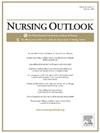一项国际流行病学调查样本中肤色与压伤严重程度的关系
IF 3.7
2区 医学
Q1 NURSING
引用次数: 0
摘要
几十年的研究表明,黑人个体比其他种族/民族群体经历更高的阶段压力性损伤(pi)。研究人员主要将差异归因于深色肤色的早期损伤难以可视化。然而,很少有人真正测量过肤色。目的本研究利用国际PI流行率数据库,探讨僧肤色量表评估与PI分期的关系。方法采用医院获得性和社区获得性PI分期的多元logistic回归模型,控制常见协变量。中等dst (Monk 06-10)与发展为2期或3期PI与1期PI的相对风险相关。结论最近的文献结合研究结果表明,肤色研究存在广泛的差距。需要全面的努力。领导者必须确定研究重点,制定政策,并在教育和实践中树立标准,以促进不同肤色的代表性。本文章由计算机程序翻译,如有差异,请以英文原文为准。
Association of skin tone and pressure injury severity in an international prevalence survey sample
Background
Decades of research show that individuals who are Black experience higher-stage pressure injuries (PIs) than other racial/ethnic groups. Investigators primarily attribute differences to difficulty visualizing early injury in dark skin tones. Yet, few have actually measured skin tone.
Purpose
This novel study examined the relationship between Monk Skin Tone Scale assessments and PI stage using an international PI prevalence database.
Methods
Multinomial logistic regression models for hospital-acquired and community-acquired PI stage were employed, controlling for common covariates.
Discussion
Medium–DST (Monk 06–10) were associated with a two- to fourfold relative risk of developing a stage 2 or stage 3+ PI versus stage 1.
Conclusion
Recent literature combined with study results indicates a widespread skin tone-research gap. Comprehensive efforts are needed. Leaders must set research priorities, shape policy, and model standards in education and practice that promote representation across the spectrum of human skin tones.
求助全文
通过发布文献求助,成功后即可免费获取论文全文。
去求助
来源期刊

Nursing Outlook
医学-护理
CiteScore
6.20
自引率
7.00%
发文量
109
审稿时长
25 days
期刊介绍:
Nursing Outlook, a bimonthly journal, provides innovative ideas for nursing leaders through peer-reviewed articles and timely reports. Each issue examines current issues and trends in nursing practice, education, and research, offering progressive solutions to the challenges facing the profession. Nursing Outlook is the official journal of the American Academy of Nursing and the Council for the Advancement of Nursing Science and supports their mission to serve the public and the nursing profession by advancing health policy and practice through the generation, synthesis, and dissemination of nursing knowledge. The journal is included in MEDLINE, CINAHL and the Journal Citation Reports published by Clarivate Analytics.
 求助内容:
求助内容: 应助结果提醒方式:
应助结果提醒方式:


